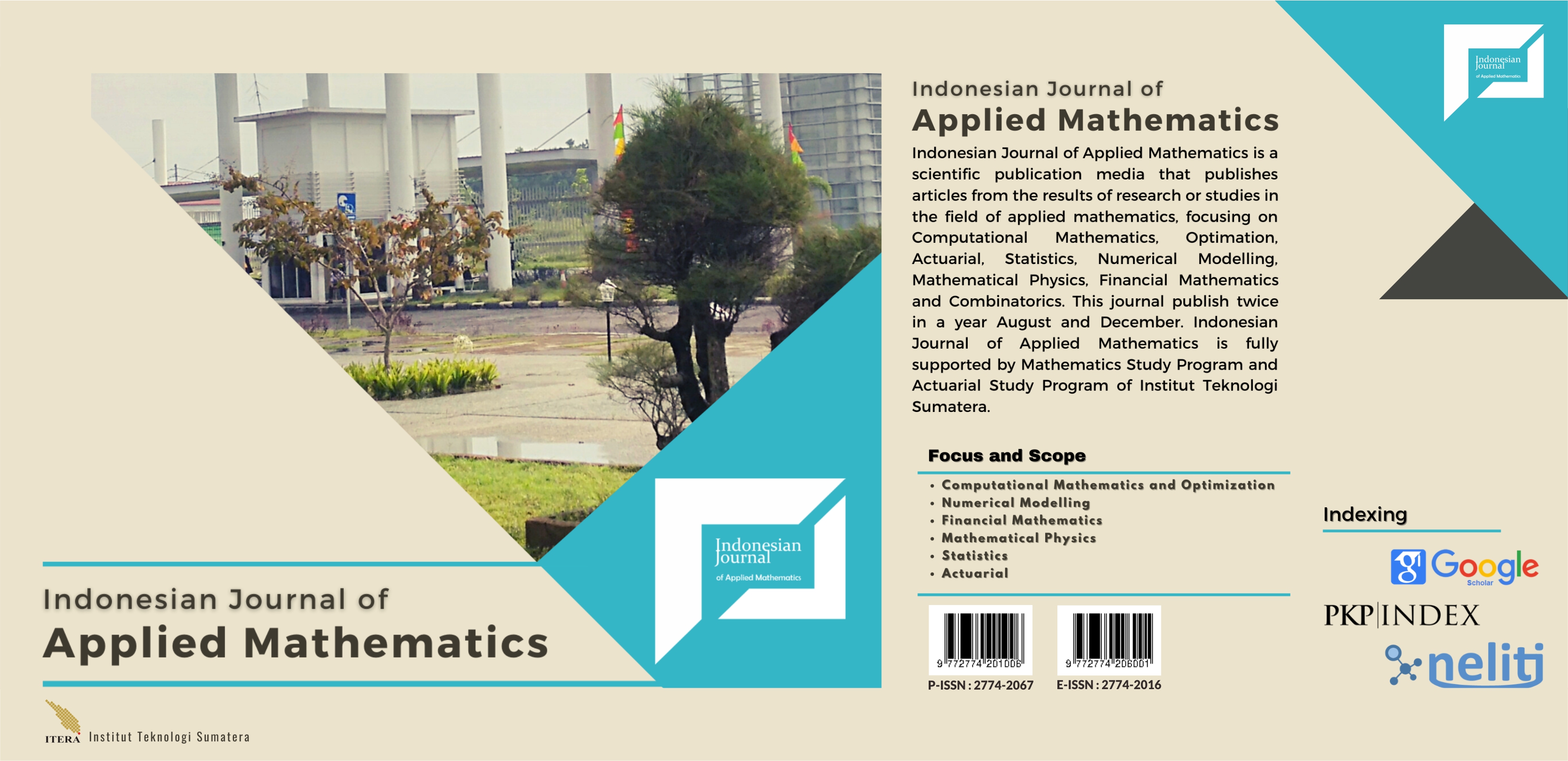Implementasi Kombinasi Secret Sharing dan Steganografi Citra Least Significant Bit dengan QR Code
Abstract
Information security becomes very important as long as information technology continues to develop. This research combines Shamir Secret Sharing (Scheme ( , )) cryptography and Least Significant Bit (LSB) steganography to improve information security in the aspect of confidentiality. The need to collect a minimum number of shares, Scheme ( , ) method makes it more difficult for hackers to reconstruct the message. The implementation of the combination of cryptography and steganography produces an application program created with Python programming languange version 3.11.2, where the Scheme (t,w) used is and RGB image as the cover object of LSB method. In determining the location of image pixels that will be inserted into the message, random numbers generated by the Linear Congruential Generator (LCG) algorithm is used. The program can create a share of text messages with a maximum of 8 characters contained in ASCII characters 32 to 126. The result obtained from the share construction program is QR codes that refers to the stego image that has been inserted by the share, so that the existence of information in the QR code is difficult to know. The program can also reconstruct the message back from QR codes.
Downloads
References
[2] Yusup, I. M., Carudin, C., & Purnamasari, I., “Implementasi Algoritma Caesar Cipher dan Steganografi Least Significant Bit Untuk File Dokumen,” Jurnal Teknik Informatika dan Sistem Informasi, vol. 6, no. 3, pp. 434-441, December 2020.
[3] Sinaga, R., Purba, S., & Siburian, R. M., ”APLIKASI PEMAHAMAN DAN PENERAPAN FAST (k,n) THRESHOLD SECRET SHARING SCHEME,” Jurnal Teknologi, Informasi dan Industri, vol. 3, no. 1, pp. 76-83, 2023.
[4] Chuang, J. C., Hu, Y. C., & Ko, H. J., “A Novel Secret Sharing Technique Using QR Code,” International Journal Of Image Processing, vol. 4, no. 5, pp. 468-475, 2010.
[5] Djuwitaningrum, E. R., & Apriyani, M., “Teknik Steganografi Pesan Teks menggunakan Metode Least Significant Bit dan Algoritma Linear Congruential Generator,” JUITA: Jurnal Informatika, vol. 4, no. 2, pp. 79-85, 2017.
[6] Singh, P., “A Comparative Study of Audio Steganography Techniques,” International Research Journal of Engineering and Technology (IRJET), vol. 3, no. 4, pp.580-585, 2016.
[7] Az-Zahra, F., Marwati, R., & Sispiyati, R., “Implementasi QR Code dengan Algoritma SHA-256 dan RSA yang Ditingkatkan untuk Autentikasi Dokumen Digital,” Jurnal EurekaMatika, vol. 12, no. 1, pp. 11-22, 2023.
[8] Ispandi, I., Fauzi, A., & Sugiono, S., “Stegnografi Menggunakan Metode Least Significant Bit dan Quick Response Code (QR-Code),” JURIKOM (Jurnal Riset Komputer), vol. 6, no. 5, October 2019.
[9] Kurniasih, F., Marwati, R., & Sispiyati, R., “Penyisipan Pesan Rahasia pada Gambar dengan Menggunakan Affine Cipher dan Least Significant Bit-2 (LSB-2),” JEM (Jurnal Eureka Matika, vol. 11, no. 2, pp. 79-88, 2023.
[10] Fahrizal, M., & Solichin, A., “Pengamanan M-Commerce Menggunakan One Time Password Metode Pseudo Random Number Generator (PRNG),” Rabit: Jurnal Teknologi dan Sistem Informasi Univrab, vol. 5, no. 2, pp. 108-116, July 2020.
[11] Nurfitri, K., & Suyanto, M., “Penilaian Kualitas Pemampatan Citra pada Aplikasi-Aplikasi Instant Messenger,” MULTITEK INDONESIA, vol. 10, no. 2, February 2016.
Copyright (c) 2025 Indonesian Journal of Applied Mathematics

This work is licensed under a Creative Commons Attribution-NonCommercial 4.0 International License.





